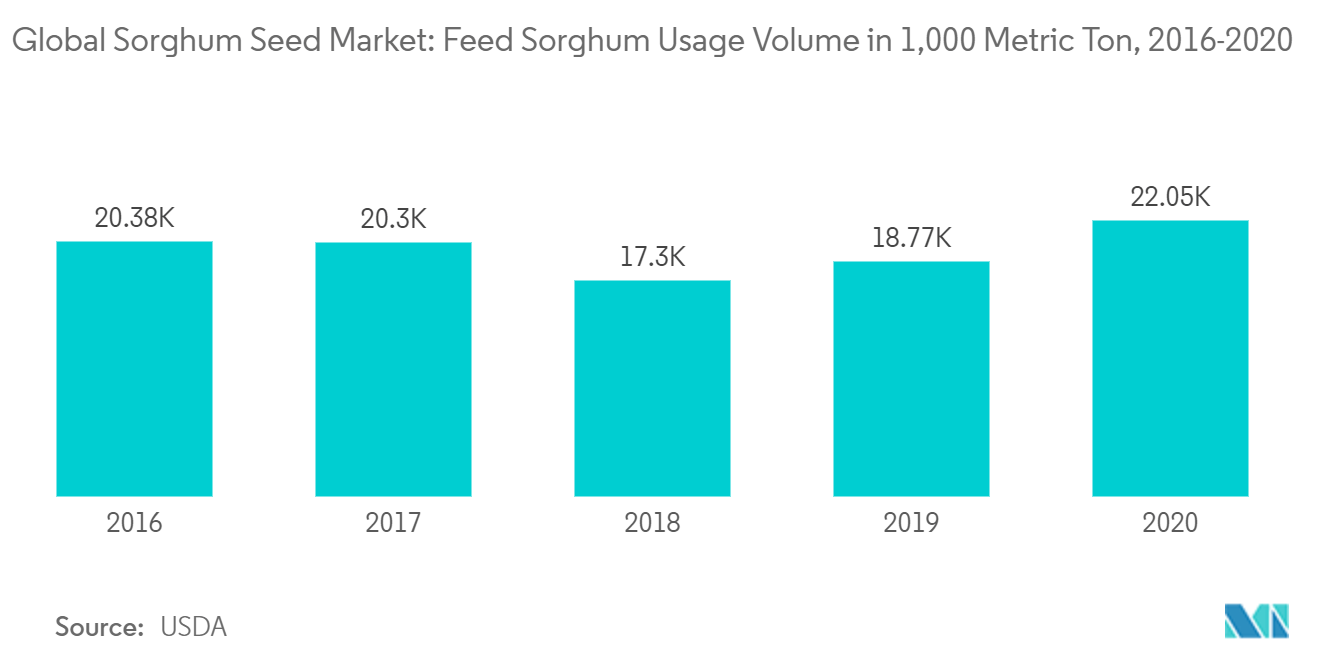Market Trends of Sorghum Seed Industry
Growing Demand From Animal Feed Sector
The main industries using sorghum are animal feed manufacturers, alcohol distilleries, and starch industries. There is an unprecedented increase in the demand for animal protein in the last few years. According to the Organisation for Economic Co-ordination and Development (OCED), meat consumption has raised from 114 million metric tons in 2017 to 116 million metric tons in 2018. Poultry meat is the most consumed by humans with per capita consumption of 30.6 kilograms per year, followed by pork with per capita consumption of 23.5 kilograms per year. This has lead to an increase in the population of livestock which directly has an effect on the production of animal feed. As a result of this, according to a report published by NASS-USDA, the usage of sorghum as feed concentrates has increased from 2.3 million metric ton in 2014 to 3.6 million metric tons globally in 2016. This will create potential demand for sorghum seeds.
Furthermore, in 2016, the European Commission granted funding for five EU countries, including France, Spain, Italy, Bulgaria, and Romania, with a three-year budget of USD 716,284.3. The fund aims to promote sorghum grain, feed, and seed, by contributing to its development in Europe. The increase in the demand for feed and increasing prices of corn are encouraging farmers to take-up sorghum forage cultivation. This is expected to fuel the demand for sorghum seeds.

North America Holds the Largest Share
North America is the largest market for sorghum seeds. According to USDA, North America is one of the largest exporters of sorghum seeds. Japan, Mexico, and Philipines are the major importers of North American sorghum. The sorghum varieties available in the United States are completely tannin-free. As a result, sorghum can be used in poultry diets with only minor changes to the other dietary ingredients. In the year 2016, the Canadian government released an MOA 'National Structure Adjustment Plan for Crop Farming (2016-2020)', which listed sorghum forage as one of the substitute crops for corn. Such government initiatives for promoting sorghum production in the country is likely to further prospect the sales of forage sorghum seeds in the region.


